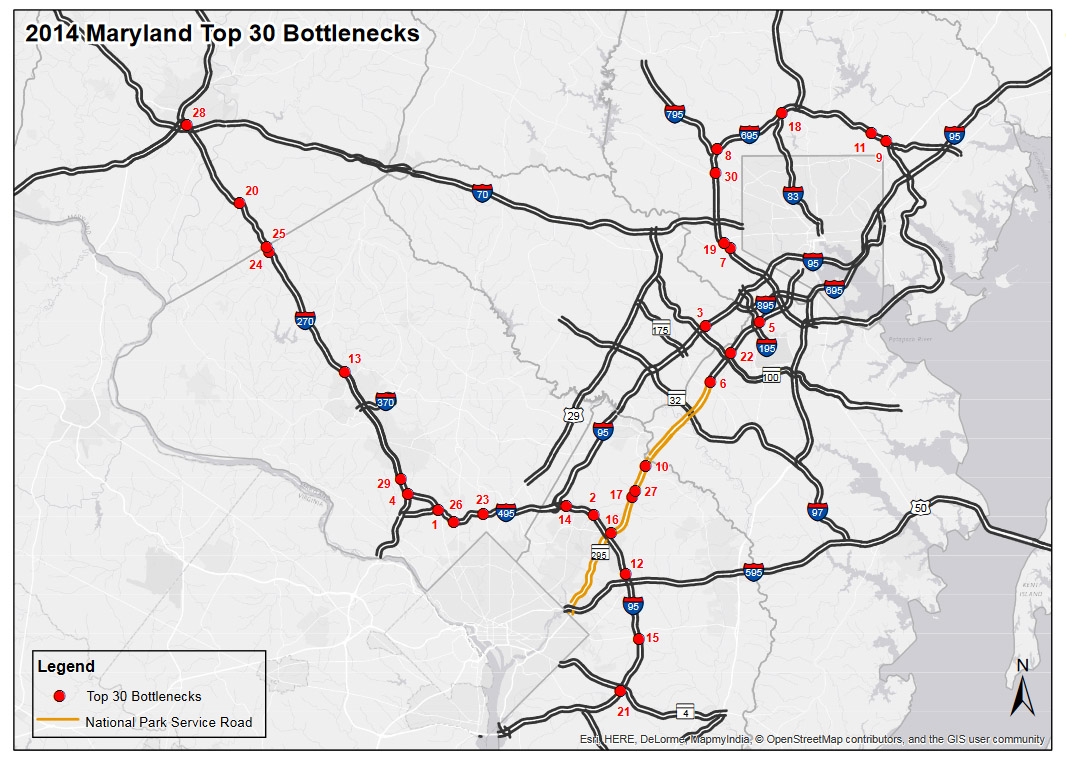POTOMAC, Md. — For a commuter, few things are more frustrating than having what was once a lane of moving traffic transform or disappear completely.
Bottlenecks or choke points continue to grow in the D.C. region as the number of cars and commuters grow, but without a dramatic rise in roadway capacity.
A report by national transportation research group TRIP includes a look at Maryland’s 30 worst bottlenecks.
The worst choke point is on the Inner Loop of the Beltway, at the Interstate 270 spur. On a daily basis, the stretch of highway has bottleneck conditions 168 minutes per day, according to the report.
Also in the top 5, at No. 4, is the 270 split, based on information provided by the Maryland State Highway Administration.
“That funneling of traffic — from 6, to 5, to 4, to 3, to 2 (lanes) — it’s what’s causing that huge horrific backup every afternoon,” said Richard Parsons, vice chairman of the Southern Maryland Transportation Alliance of the 270 bottleneck.
Rocky Moretti, of TRIP, said Maryland drivers spend 82 hours annually stuck in congestion on average.
“It’s like losing two weeks of vacation because of the level of traffic,” said Moretti during a news conference to release his group’s report: “Keeping Maryland Mobile.”
The group reviewed the progress the state has made to address bottlenecks and the challenges it faces to maintain a safe transportation network.
Maryland’s Department of Transportation Secretary Pete Rahn said not only does congestion affect how quickly a commuter can get to a location, it also negatively affects residents’ quality of life.
“We know we have a problem, that’s why we’re trying to tackle the most congested route in the state, first,” Rahn said.
He said the state has set aside $100 million to reduce congestion along I-270. The state is now soliciting ideas from any entity that could dramatically improve the flow of traffic and that could turn those ideas into reality faster than it would take to build additional lanes — approximately 10 to 15 years.
The groups at the joint news conference said research shows the vast majority of the public supports increased funding for transportation projects.
Parsons said local history shows that congestion conditions can be improved with creative thinking.
“Virginia went from concept to ‘we’re driving on it,’ in six years on 39 miles of new toll lanes on Interstate 95 in Northern Virginia,” said Parsons. “Yes, the environmental approval process takes a long time, but that’s no reason not to get started now.”
See the full list of bottlenecks here.









